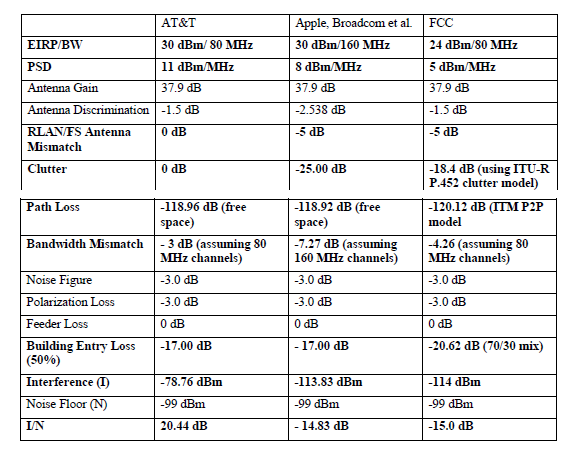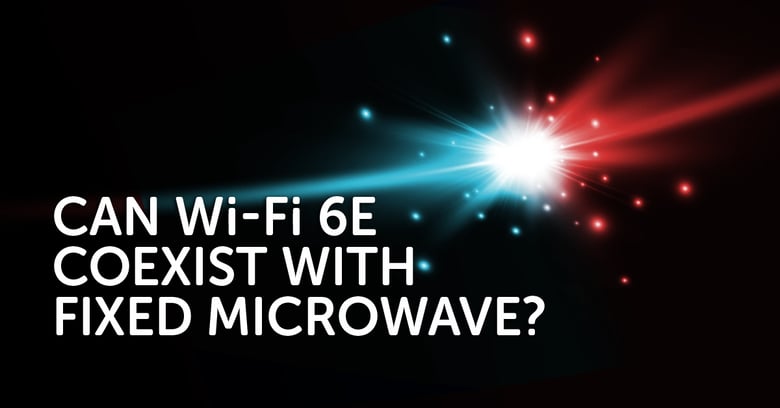Wi-Fi 6E Introduced: Motivation, Frequency Bands & Devices
Launched about 20 years ago, Wi-Fi has become an essential utility in our everyday life. Cisco’s latest Annual Internet Report forecasts that by 2023 Wi-Fi will carry 54% of global IP traffic, up from 11% in 2017. Moreover, Wi-Fi hotspots will grow four-fold from 2018 to 2023, reaching 628 million by 2023.
To meet the growing demand for wireless broadband the FCC recently opened up 1,200 MHz of unlicensed spectrum in the 6 GHz band. This spectrum will support 14 channels of 80 MHz bandwidth along with seven channels of 160 MHz bandwidth and is designed to ease congestion and enable higher speeds on handheld devices. This additional spectrum more than triples the current Wi-Fi allocation in the 2.4 GHz and 5 GHz band – from less than 600 MHz to nearly 1,800 MHz. The three-band allocation will go by the name Wi-Fi 6E and will become accessible later in 2020.
There are many vendors engaged in the Wi-Fi 6E initiative including Apple, Broadcom, Cisco, Facebook, Google, HP Enterprise, Intel, Marvell Semiconductor, Microsoft, Qualcomm and Ruckus. These and other vendors are likely to introduce products in the next several quarters that support Wi-Fi 6E. IDC analyst Phil Solis believes that smartphones and tablets are likely to be the first consumer devices to support Wi-Fi 6E. From a system-on-a-chip (SoC) perspective, Broadcom has announced a Wi-Fi 6E mobile chip and Qualcomm has said that it is ready to support 6 GHz Wi-Fi in next-gen wireless products. Similarly, Intel has stated they will have chips available by January 2021.
Types of Access Points
The FCC has authorized two different types of unlicensed operations: (1) indoor low-power access points across the entire Wi-Fi 6E allocation in the 6 GHz band, and (2) indoor and outdoor standard-power access points in the 5.925-6.425 GHz and 6.525-6.875 GHz sub-bands. These sub-bands are often used by fixed-microwave and some fixed-satellite licensees to support a variety of mission-critical services. Therefore, type two deployments must support automated frequency coordination (AFC) to reduce interference to these services.
Low-Power Access Points: Regulations
As shown in the following table, the FCC has authorized low-power Wi-Fi 6E access points to operate in the 6 GHz band at power levels up to 30 dBm EIRP (PSD of 5 dBm/MHz EIRP) without AFC.

Some have raised concerns about the potential for harmful interference from unlicensed indoor devices operating at these power levels upon mission-critical fixed-microwave services.
Low-Power Access Points: Interference Protection Analyses
There have been many technical analyses in the 6 GHz band with a majority of advocates showing that the likelihood of interference to fixed-microwave receivers is extremely low. However, AT&T has asserted that harmful interference is likely to occur to the microwave links. AT&T submitted a scenario where an unlicensed device operates relatively far from the microwave receiver, but terrain causes the unlicensed device to be in or close to the main receiver beam.
Use case: WQPJ679 Batavia, NY – longer distance between RLAN and fixed service (FS),
but RLAN closer to main beam

As this is a theoretical exercise, different assumptions led to different conclusions. AT&T’s assumptions regarding parameters such as EIRP/BW, path-loss model, building entry loss etc. led to a harmful 20 dB I/N ratio. However, simulations led by Apple/Broadcom and the FCC indicated that harmful interference in this scenario will not occur to fixed-microwave links at this power level and show that I/N ratios are far less than the -6 dB threshold.
Standard-Power Access Points: Regulations
As shown in the following table, the FCC authorized standard-power Wi-Fi 6E access points to operate in these bands at power levels up to 36 dBm EIRP (PSD of 23 dBm/MHz EIRP) and client devices to operate at up to 30 dBm EIRP (PSD of 17 dBm/MHz EIRP).

These power-level restrictions for standard-power access points are permitted only under the control of an AFC system that automatically determines and provides a list of available frequencies without causing harmful interference to incumbent microwave receivers. The AFC system uses data from the Universal Licensing System (ULS) database for determining the location of incumbent fixed-microwave operations for purposes of establishing the exclusion zones.
Exclusion Zones Calculations
For the AFC to accurately calculate exclusion zones, it requires the following parameters from Wi-Fi 6E devices:
- Incorporated geolocation: internal geolocation capability to determine its geographic coordinates
- Antenna height: antenna height above ground
- Frequency availability re-check interval: periodic scanning to verify the operating frequency is available
AFC Reliability
In theory the AFC mechanism ensures protection against harmful interference from unlicensed standard-power operations in the U-NII-5 and U-NII-7 bands. In practice, however, the information used by the AFC systems might be inaccurate or incomplete. The information may also be unavailable due to a power loss or internet outage, and the GPS signal might not work if it is blocked by a nearby building or other obstruction.
Implications for Existing MW Links
In cases where the AFC fails to mitigate the interference, the microwave system will experience a degradation in the link. If an adaptive coding and modulation (ACM) mechanism is in place, a system might experience a reduced capacity for some time. For example, a microwave link might change from 1024 QAM down to QPSK to keep the link alive without losing connection.
Links that use fixed modulation are more prone to link degradations and outages. For a mission-critical application relying upon a fixed modulation link, Ceragon recommends using a prediction model to analyze the zone where the link is installed. Alternatively, the user should consider moving the application to an 11 GHz link.
Ceragon Services to Ensure 6 GHz Link Performance
Ceragon Global Services offers a team of experts to help you monitor and analyze your microwave links. Our global experience base and in-depth understanding of network technologies allow us to predict, pinpoint, and mitigate potential 6 GHz link issues. Our powerful Network Optimization & Predictive Analytics service brings greater accuracy to network reliability forecasts, provides detailed link budget analysis and new frequency configurations, and proactively mitigates bottleneck links, outages and other issues before they impact your network health. This allows operators and service providers to predict usage, technology requirements and trends with superior accuracy.
Conclusion
It will take time before interference issues are resolved both for low-power and standard-power access points. Many incumbents including the Fixed Wireless Communications Coalition (FWCC), AT&T, the Utilities Technology Council (UTC) et al., are concerned about the potential for harmful interference to their operations and are requesting to exclude 6 GHz from unlicensed operations. Moreover, the FCC doesn’t rule out that the new regulations for unlicensed spectrum use could impose some economic costs if harmful interference to incumbent services occurs. The ability of AFC to mitigate the interference is still unproven. Ceragon recommends mission-critical applications relying upon 6 GHz links be evaluated for potential interference so proper mitigation can be implemented.
To learn more download now


